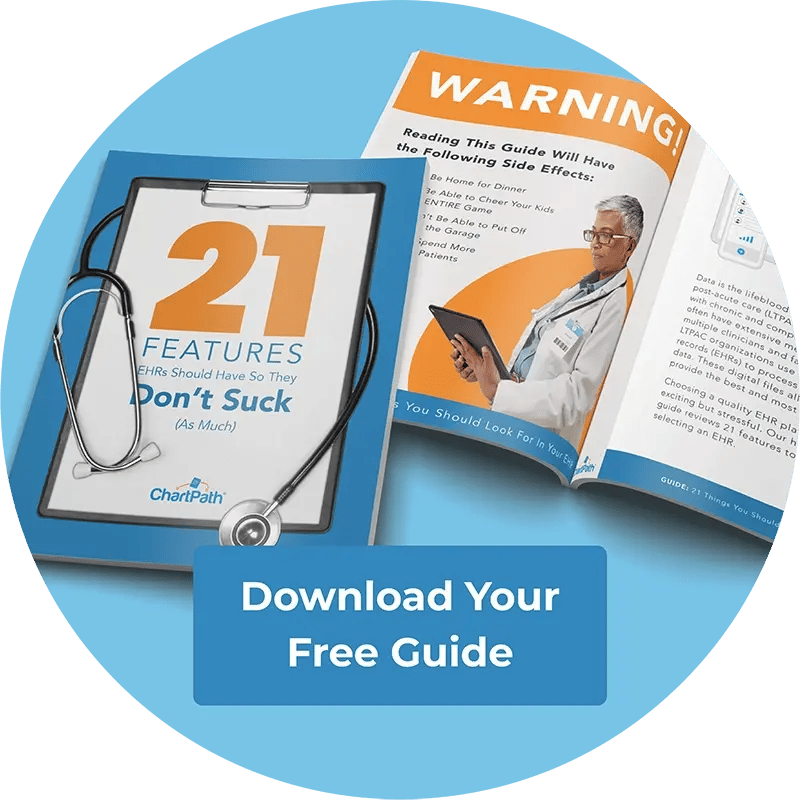Different Types of Care: What Every LTPAC Provider Should Understand

Care transitions don't come with background music, but they often deserve a dramatic score. One moment, you're reviewing vitals in a nursing facility; the next, you're deciphering a hospital discharge summary that Kevin scribbled up like a cryptic crossword—again. For long-term and post-acute care (LTPAC) clinicians, navigating different care types, from preventative to palliative, is central to safe, in-sync care.
Each care type has its own rhythm, risk points, and documentation quirks. And when handoffs are clean and the charting is on tempo? That's when the whole system plays in tune.
Defining the Major Types of Care in Healthcare
Healthcare is more of an orchestra than a solo act. Each type of care plays a part during different stages of life, recovery, or decline. From prevention to end-of-life care, clinicians offer a range of care services that overlap.
There are three major types of care, which include:
-
Preventive care, primary care, and acute care
-
Post-acute care and long-term care
-
Hospice care, home-based care, and palliative care
The first type falls under short-term or outpatient care. The latter two complete the LTPAC continuum, where the focus shifts to recovery, stability, and quality of life.
Clinicians in LTPAC settings, from skilled nursing facilities (SNFs) and assisted living communities to in-home care, must understand how these care types intersect. Mistakes in classification or documentation can delay admissions, disrupt care plans, or trigger compliance issues. Understanding the care setting you're entering and its requisite documentation is the first step toward coordinated care.
Preventive, Primary, and Acute Care Explained
Preventive care focuses on avoiding illness before it starts. Think annual physicals, vaccines, and screenings. Primary care steps in when patients have ongoing or non-emergency needs, usually handled by an outpatient clinic or general practitioner. Acute care is necessary when life goes sideways with ER visits, short hospital stays, or sudden injuries requiring immediate attention.
For LTPAC clinicians, these care types are the launching point for most transitions. That new admission in your SNF? Chances are, they just came from an acute care hospital.
Post-Acute and Long-Term Care in LTPAC Settings
Post-acute care occurs between full crisis mode and independence. It includes different types of care services, such as rehabilitation and home health. It's typically short-term but still medically complex.
Alternatively, long-term care supports individuals with chronic conditions or those with declining function over a longer period. Long-term care can range from residential and live-in care to overnight care provided in a facility or the patient's home.
LTPAC clinicians often juggle both types of care simultaneously, especially in SNFs. The challenge lies in providing high-quality care while aligning documentation with evolving care plans. Miss a transition point or miscode a service, and you're suddenly facing compliance gaps and care disruptions.
Hospice and Palliative Care: Focus on Comfort and Quality of Life
Though frequently grouped together, hospice care and palliative care serve different but overlapping goals. Palliative care supports patients with serious illnesses at any stage of their disease. It focuses on relieving symptoms and improving quality of life. Hospice care begins when curative treatments are no longer effective. Typically, it's introduced when a patient is expected to live six months or less and elects to focus on comfort over recovery.
LTPAC clinicians often bridge the gap between families, patients, and providers during these emotionally charged transitions. These settings require clear documentation, adaptability to shifting care plans, and seamless communication.
Understanding these distinctions helps you deliver compassionate medical care without sacrificing compliance or accuracy. It also reinforces the value of coordinated care across settings, which is foundational to LTPAC success.
Key Challenges in Care Transitions for LTPAC Providers
Transitions between different types of patient care don't always go as planned, and LTPAC clinicians are often left improvising. Discharge notes arrive late. Critical info gets lost between systems. And who doesn't love the joy of deciphering three versions of the same care plan?
Common issues, such as handoff delays, documentation discrepancies, and fragmented electronic health record systems (EHRs), are annoyances with serious implications. They affect patient outcomes, trigger compliance headaches, and delay care. In a setting where post-acute care, long-term care, and hospice services often overlap, minor miscommunications can escalate into major disruptions.
ChartPath's SNF-optimized EHR helps clinicians stay one step ahead of the chaos. With built-in tools for Start of Care (SOC) initiation, multi-site coordination, and shared care plan visibility, you can keep documentation aligned. Whether you're working across urgent care and home care or managing complex transitional care, ChartPath puts your processes in tune. It's the orchestral conductor you didn't know you needed.
Best Practices for Managing Multiple Care Types in LTPAC
LTPAC clinicians often manage evolving care needs across settings. That means coordinating medical care, updating evolving care plans, and aligning services across models and facilities.
One strategy is to establish a shared communication protocol across sites. Whether it's a standardized handoff form or consistent update protocols, it helps reduce the risk of duplicated or missed services.
Another best practice involves building workflows around the patient, not the paperwork. Automate where possible, but leave room for flexibility when care needs shift or when patients transition between care types. When clinicians connect and systems elevate communication, patients receive better continuity and more personalized care.
Leveraging EHR Solutions for Compliance and Quality Care
LTPAC clinicians are under constant pressure to document, code, and comply with a revolving door of regulations. The right EHR system should make that easier, not harder.
ChartPath's cloud-based EHR is designed specifically for the LTPAC environment. It supports SOC processes, care plan updates, and multi-site collaboration without unnecessary friction. When patients transition between care types, ChartPath transfers their records with them, intact and fully actionable.
By automating documentation triggers and syncing patient histories, clinicians reduce errors and avoid compliance red flags. Audit-ready reports help clinicians prioritize patient care. ChartPath keeps different types of patient care clean, compliant, and connected.
Improving Care Delivery Across Settings
ChartPath was built to support clinicians who don't sit still. You know who you are; we see you charting in SNFs while managing emergency care transitions and rounding across home care sites. By bringing everything into a single, centralized, cloud-based platform, ChartPath simplifies the process, allowing you to document in rhythm. Because when your tools harmonize with your workflow? That's when the EHR diva hits her high note.
Want to see how it works? Schedule a live demo and take the first step toward smarter care coordination.
Blog Post Tags
EHRGet Awesome Content Delivered Straight to Your Inbox!
Posts by topic
- EHR
- Better Charting
- LTPAC
- AI
- RCM
- Compliance
- Healthcare Trends
- Press Release
- GUIDE
- reporting
- Artificial Intelligence
- Assisted Living
- Automation
- Behavioral Health
- Business
- Events
- General
- MIPS
- Operations
- Patient Outcomes
- Physician Billing Services
- Population Health Management
- Resumption of Care
- SNF
- TCM
- Value Based Care
- eCR
- interoperability
- partners
- regulations
- regulatory See All See Less




